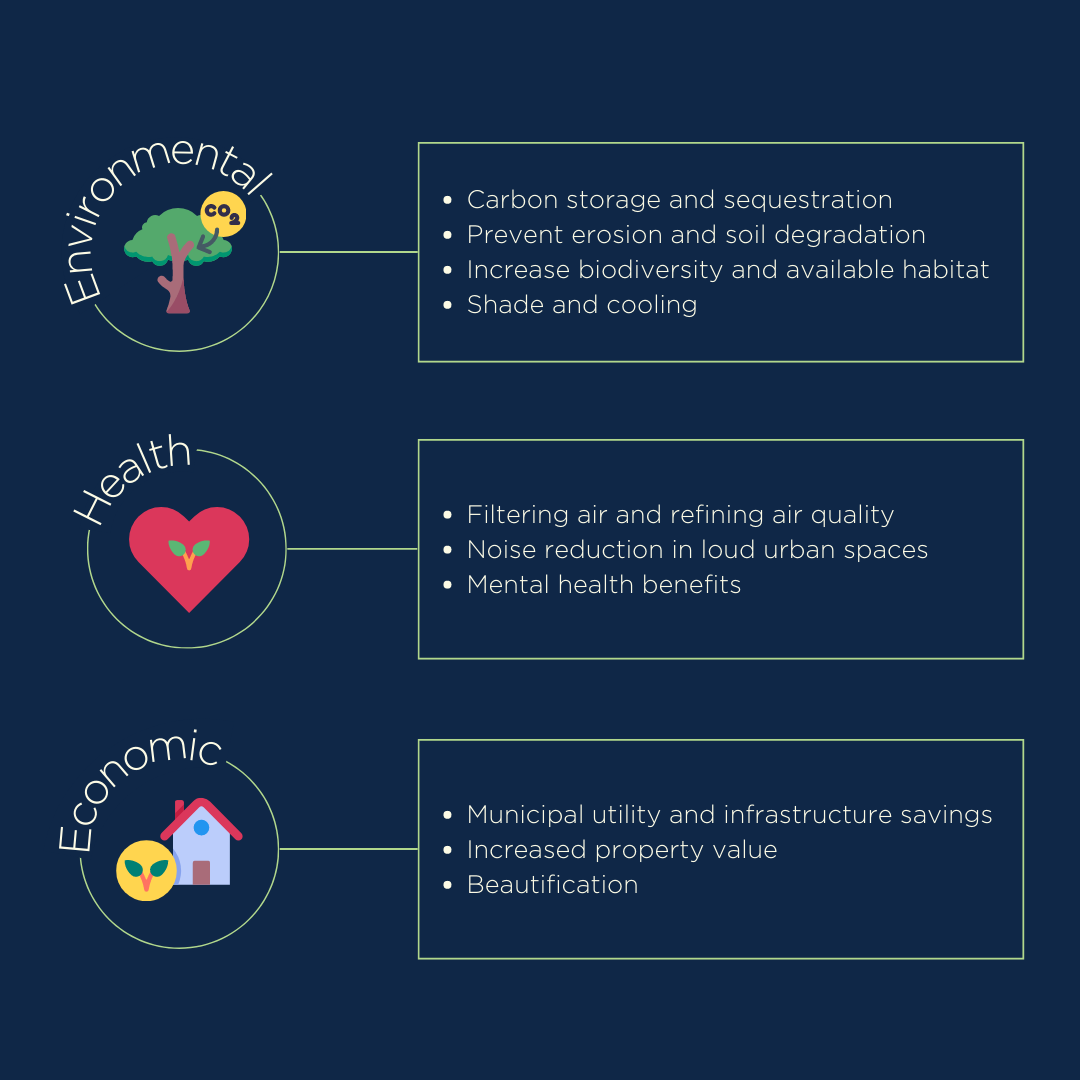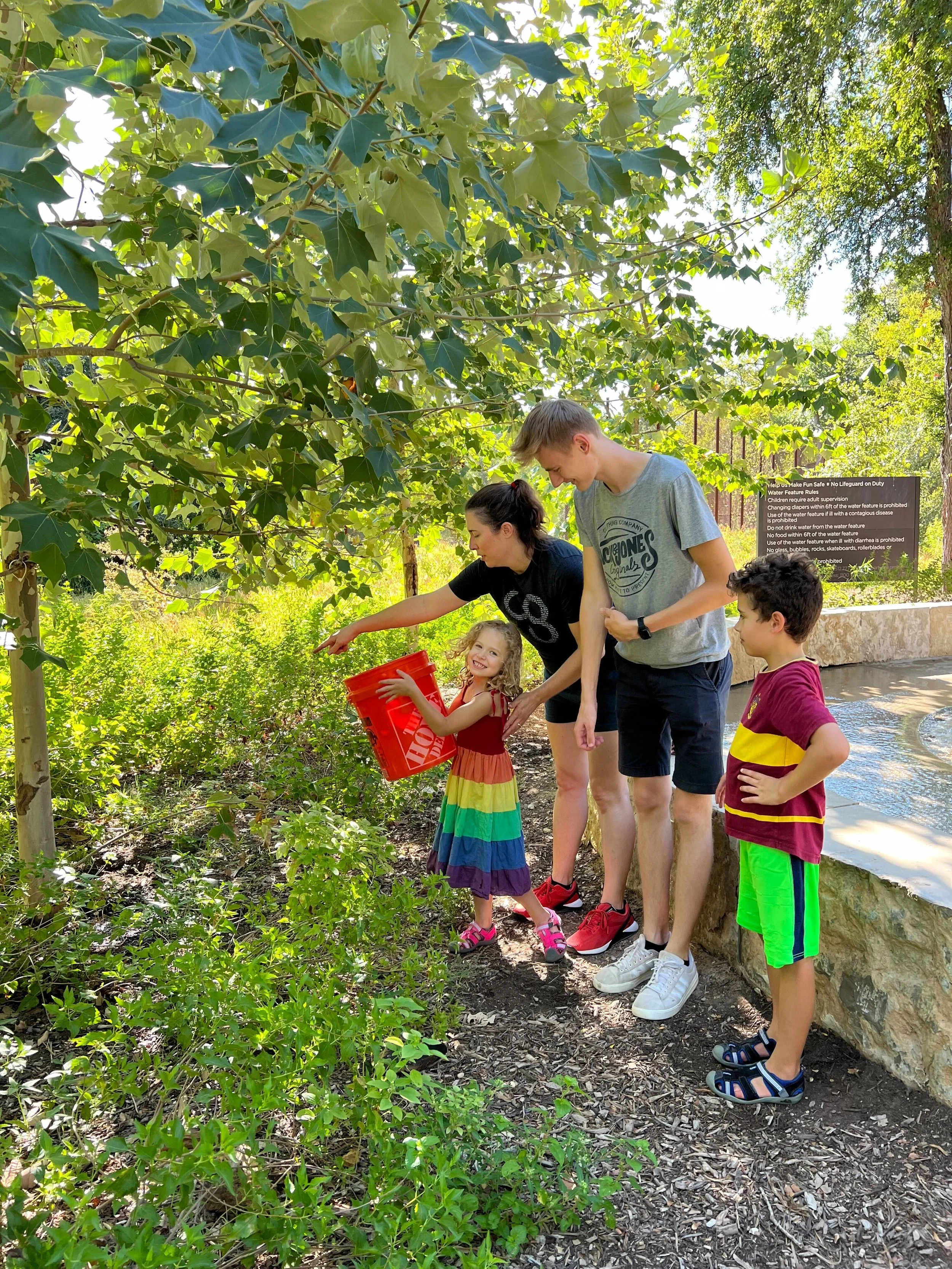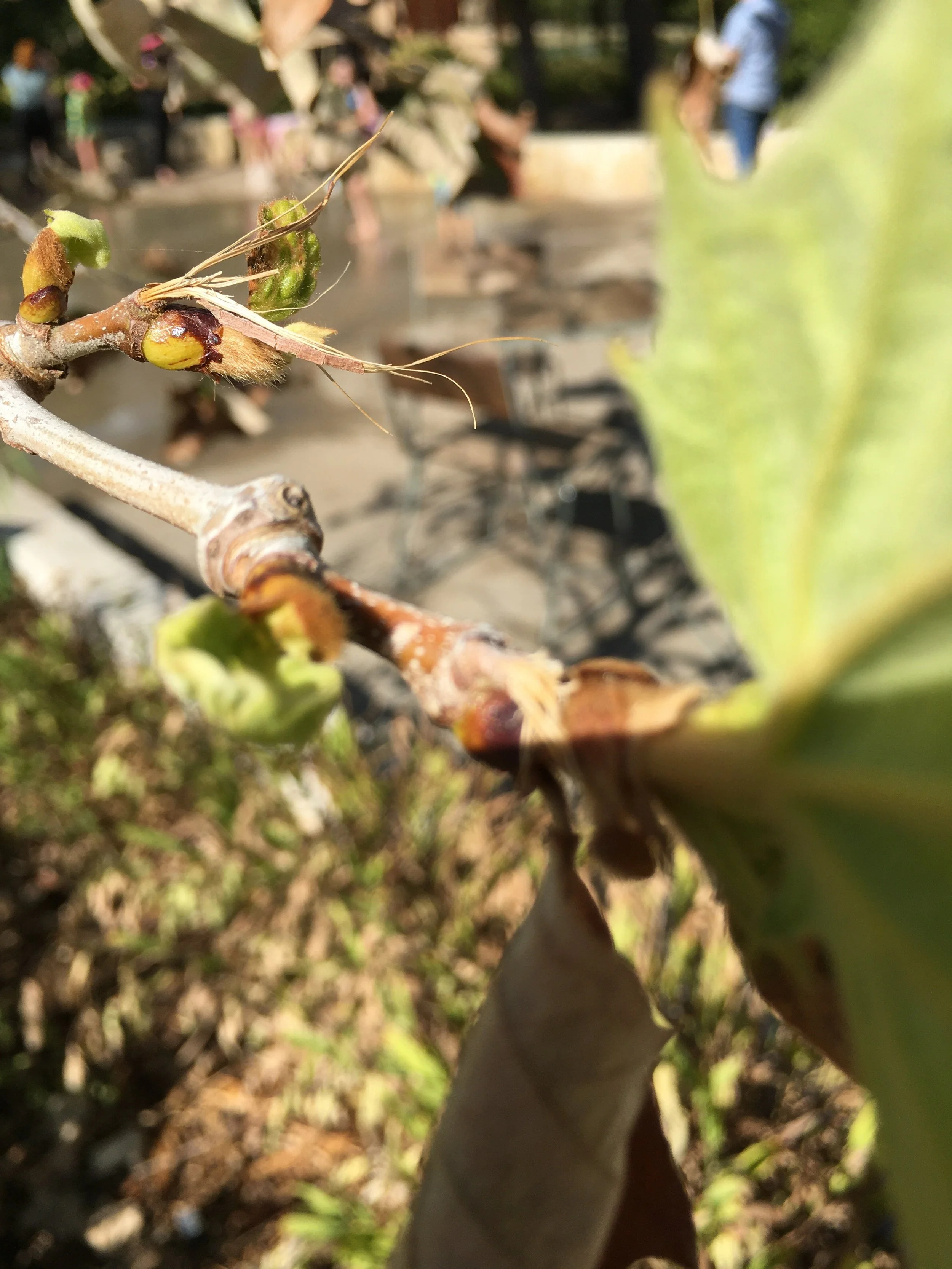Trees are some of the most beautiful gifts that nature produces and they provide environmental, health, and even economic benefits.
The trees in a busy and populated city like Austin make a world of difference in our day-to-day lives. Our trees help us stay connected to the environment around us. According to the City of Austin Community Tree Report, Austin's urban forest is made up of 33 million trees and offers over $36 million in annual city-wide benefits!
The growth and expansion of forests, even urban forests, takes time, which means patience is an important virtue when it comes to producing a strong and healthy forest system.
Forests expand through their saplings. These vulnerable newborn trees either come from seeds or are off-shoots of the roots from larger trees. Saplings are often dependent on mother trees to shade them from excessive sunlight that cause moisture loss from the soil into the surrounding air - known as evapotranspiration. These larger trees are able to share nutrient resources and even exchange information with other trees. All of these factors promote sapling growth and therefore the growth of the forest.
A robust forest has diverse ages among its canopy, which is why in urban spaces larger trees are planted alongside saplings. When we plant larger trees in clearings, we must allocate more resources to them since they are unable to rely on surrounding parental trees for shared resources. By giving them the time and attention they need at their earliest stages, they can establish themselves and help strengthen the forest ecosystem.
Slow tree growth can be attributed to excessive heat and water scarcity. In Texas these factors are recurring culprits hindering tree growth. The intense temperatures and drought conditions we have experienced this summer - and will continue to experience for the foreseeable future - has made the situation much more difficult. At Pease Park many trees are feeling the heat and the resulting stress is causing many to burn and dry up.
Many of these trees are saplings and larger nursery trees who are in their first year of establishment and though all trees have been exposed to extreme conditions, some are more vulnerable than others.
“Although there are many trees of many different species experiencing negative impacts as a result of the drought, we have noticed four specific species that are experiencing the negative impacts more frequently. These species include Redbuds, Shumard oaks, Bur oaks, and Ginkgos.”
Though this is the reality, we won’t stand by and watch it happen. To help we are giving these trees the extra time and care they need to thrive. On a daily basis we are taking care of the trees because at our core, the Conservancy continues to be a friend of the trees. Both through the hard work and dedication of our Park Operations Team, and through volunteer events, we are watering the trees using water from Shoal Creek and the quick coupling stations in Kingsbury Commons. From Tuesdays through Thursdays and on Saturdays our Park Operations Team leads volunteer watering events throughout the 84-acres of Pease Park, focusing on trees that need extra care in Kingsbury Commons, Live Oak Meadow, and Gaston Green.
With collective effort from our team and the community, we have helped to save countless trees from failure and taken care of Pease Park.
For this we want to take the time to thank you for all the help you are providing. We are so happy to see the community rallying around us and the trees that make this urban green space so beautiful!
Though we should celebrate this accomplishment, many trees still require water and as Nick Boysen tells us, “We are in desperate need of volunteers to help us get water on these impacted trees.”
If you would like to lend a hand, and help us give back to the trees, we have watering opportunities available throughout the week and we encourage you to join us no matter your level of experience.
Help us take care of the trees by clicking the image to learn more and to register for upcoming watering days.
Can't make it to a volunteer event right now? Make a donation to support our team's watering efforts in the park.
Sources & Further Reading:
A. Martos, R. Pacheco-Torres, J. Ordóñez, & E. Jadraque-Gago, Towards successful environmental performance of sustainable cities: Intervening sectors. A review, Renewable and Sustainable Energy Reviews
The City of Austin, Austin's Trees Community Tree Report
J. Morgenroth, D. J. Nowak, and A. K. Koeser, DBH Distributions in America’s Urban Forests—An Overview of Structural Diversity
L. Westphal, Urban greening and social benefits: A study of empowerment outcomes






